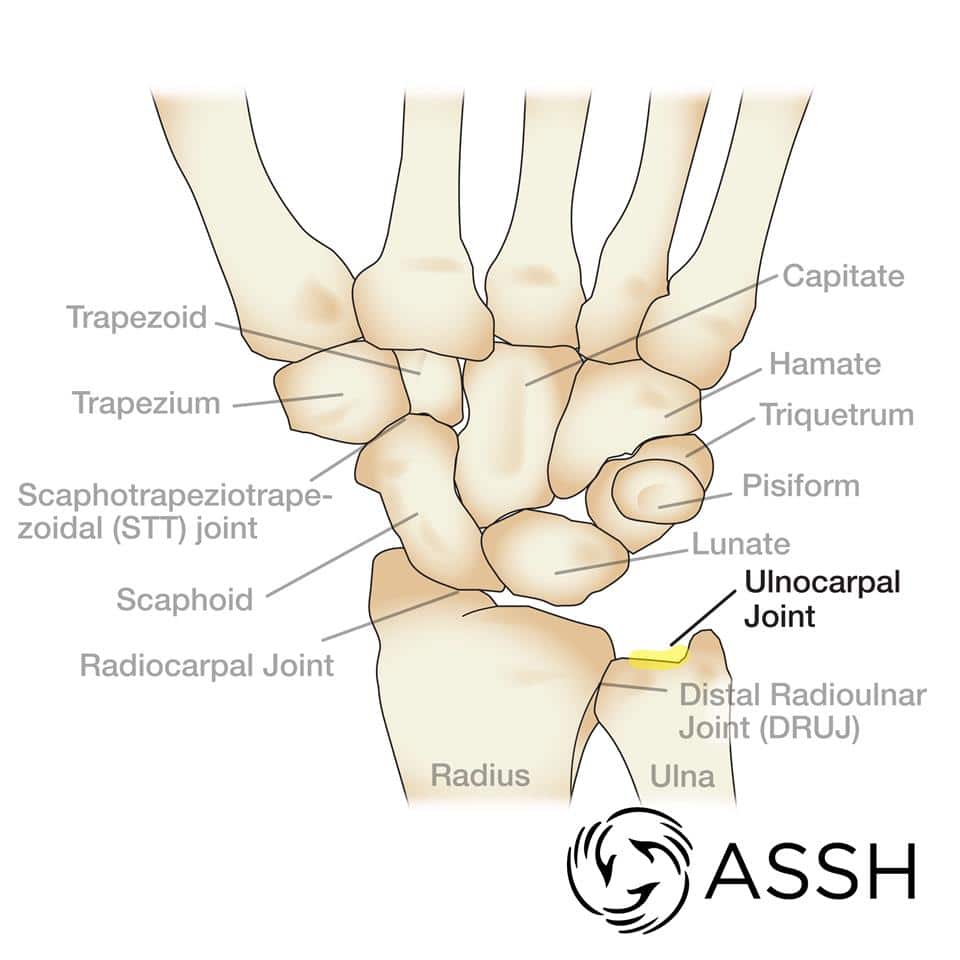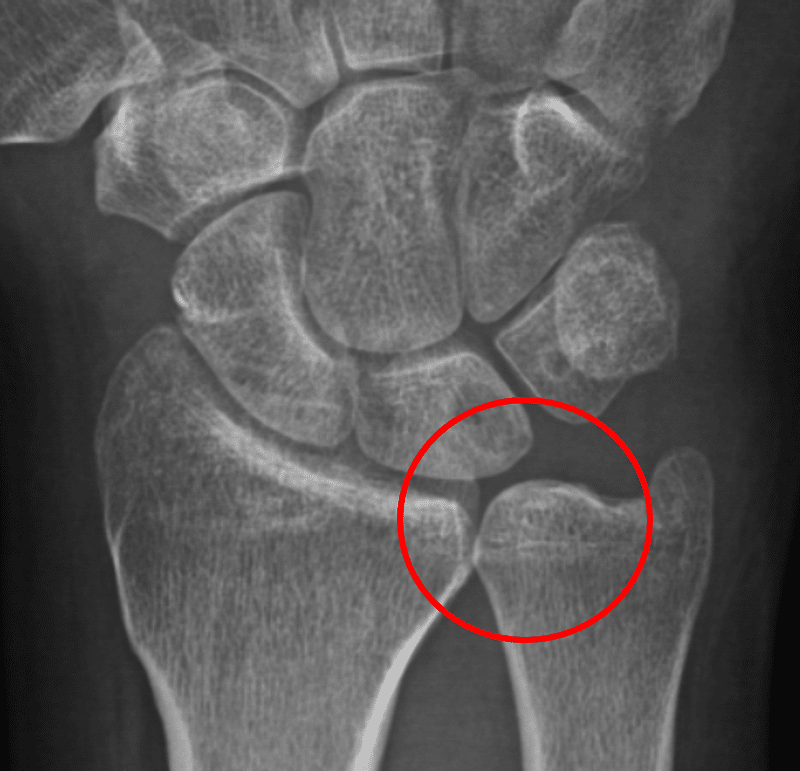Description
The term “wrist” is used to describe the joint where the hand is connected to the forearm. The actual anatomy of the wrist is not as simple. There are eight smaller bones that connect the five main hand bones (metacarpals) to the two forearm bones (radius and ulna) (Figure 1). Ulnar wrist pain (pain on the pinkie side of the wrist) is very common. It can result from injury to bones, cartilage, ligaments or tendons.
Figure 01: The wrist bones and joints are shown here. Injury to these can cause ulnar wrist pain.
Figure 02: Ulnar impaction, an ulna longer than the radius, which can cause ulnar wrist pain.
ANATOMYhELLO
The joints in our hands are made up of cartilage surfaces that cap the bones. Cartilage is a smooth surface that allows for gliding. When cartilage is healthy, there is a cushioning effect of the cartilage that absorbs and evens out the forces across the joint. Our joints typically have a capsule of tough, but flexible, fibrous tissue that helps hold the joints together and an inner lining of synovium. The synovium has multiple functions including to help provide fluid for lubrication of the joint. The tough fibrous tissue is often what is injured when you have a sprain of a joint.
CausehELLO
Some causes of ulnar wrist pain include:
- Wrist fractures
- Arthritis of the joint(s) between bones
- Ulnar impaction syndrome (when the ulna is longer than the radius, which can cause it to “bump into” the smaller wrist bones (Figure 2)
- Inflammation or irritation of the tendons that bend and extend the wrist
- Triangular Fibrocartilage Complex Injury (TFCC) (when the connection between the ulna bone and other structures in the wrist is torn by an injury or frayed over time)
- Nerve injury or compression
- Masses (tumors), most commonly ganglion cysts, which are benign
Signs and Symptoms
Pain can be felt at rest or with motion. Symptoms can include:
- Pain on “pinkie” side of wrist with movement
- Clicking or popping, especially with rotation
- Decreased grip strength
- Decreased or limited motion
Treatment
Nonsurgical Options
The treatment of ulnar wrist pain depends on the diagnosis. It can include some combination of activity modification, splinting or casting, hand therapy, anti-inflammatory medicine and/or steroid injections. If non-operative treatment does not relieve symptoms, surgery might be considered.


